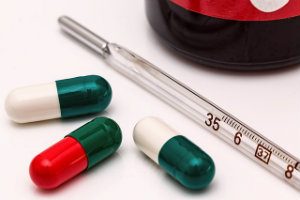Too much of a good thing?

Steroids are compounds which affect how your body functions. There are sex steroids like testosterone and estrogen which influence male and female characteristics and another called corticosteroids. Corticosteroids are made naturally by a gland sitting on top of the kidneys. One type of corticosteroid is cortisol. There are medications that mimic the action of cortisol, such as hydrocortisone or dexamethasone. One in five American adults in a commercially insured plan were given prescriptions for short term use of oral corticosteroids during a three-year period. Hydrocortisone, dexamethasone, or similar medications are commonly used to treat conditions such as: asthma, allergies, or chronic inflammatory diseases. When there is inflammation there is often pain. Oral steroids can often help with very painful conditions such as rheumatoid arthritis and oral steroids are sometimes prescribed for sciatica (a sharp pain running from your low back into your feet). Steroids can be very helpful in treating painful conditions as well and the steroids reduce inflammation. BUT…. This study found there was an increased rate of infections, blood clots and fractures with a treatment of less than 30 days. Thus, despite their benefit, caution should be used when taking oral steroids.
The Research
BMJ. 2017 Apr 12;357:j1415. doi: 10.1136/bmj.j1415.
Short term use of oral corticosteroids and related harms among adults in the United States: population based cohort study.
Waljee AK1,2,3,4, Rogers MA2,4,5, Lin P2, Singal AG6, Stein JD2,7,8, Marks RM9, Ayanian JZ2,5,8, Nallamothu BK10,2,4,11.
1
VA Center for Clinical Management Research, Ann Arbor, MI, USA awaljee@med.umich.edu.
2
University of Michigan Medical School, Institute for Healthcare Policy and Innovation, Ann Arbor, MI, USA.
3
University of Michigan Medical School, Department of Internal Medicine, Division of Gastroenterology and Hepatology, Ann Arbor, MI, USA.
4
Michigan Integrated Center for Health Analytics and Medical Prediction (MiCHAMP), Ann Arbor, MI, USA.
5
University of Michigan Medical School, Department of Internal Medicine, Division of General Medicine, Ann Arbor, MI, USA.
6
Department of Internal Medicine, University of Texas Southwestern Medical Center, Dallas, TX, USA.
7
University of Michigan Medical School, Department of Ophthalmology and Visual Science, Ann Arbor, MI, USA.
8
University of Michigan School of Public Health, Department of Health Management and Policy, University of Michigan, Ann Arbor, MI, USA.
9
University of Michigan Medical School, Department of Internal Medicine, Division of Rheumatology, Ann Arbor, MI, USA.
10
VA Center for Clinical Management Research, Ann Arbor, MI, USA.
11
University of Michigan Medical School, Department of Internal Medicine, Division of Cardiovascular Medicine, Ann Arbor, MI, USA.
Abstract
Objective To determine the frequency of prescriptions for short term use of oral corticosteroids, and adverse events (sepsis, venous thromboembolism, fractures) associated with their use.Design Retrospective cohort study and self controlled case series.Setting Nationwide dataset of private insurance claims.Participants Adults aged 18 to 64 years who were continuously enrolled from 2012 to 2014.Main outcome measures Rates of short term use of oral corticosteroids defined as less than 30 days duration. Incidence rates of adverse events in corticosteroid users and non-users. Incidence rate ratios for adverse events within 30 day and 31-90 day risk periods after drug initiation.Results Of 1 548 945 adults, 327 452 (21.1%) received at least one outpatient prescription for short term use of oral corticosteroids over the three year period. Use was more frequent among older patients, women, and white adults, with significant regional variation (all P<0.001). The most common indications for use were upper respiratory tract infections, spinal conditions, and allergies. Prescriptions were provided by a diverse range of specialties. Within 30 days of drug initiation, there was an increase in rates of sepsis (incidence rate ratio 5.30, 95% confidence interval 3.80 to 7.41), venous thromboembolism (3.33, 2.78 to 3.99), and fracture (1.87, 1.69 to 2.07), which diminished over the subsequent 31-90 days. The increased risk persisted at prednisone equivalent doses of less than 20 mg/day (incidence rate ratio 4.02 for sepsis, 3.61 for venous thromboembolism, and 1.83 for fracture; all P<0.001).Conclusion One in five American adults in a commercially insured plan were given prescriptions for short term use of oral corticosteroids during a three year period, with an associated increased risk of adverse events.











